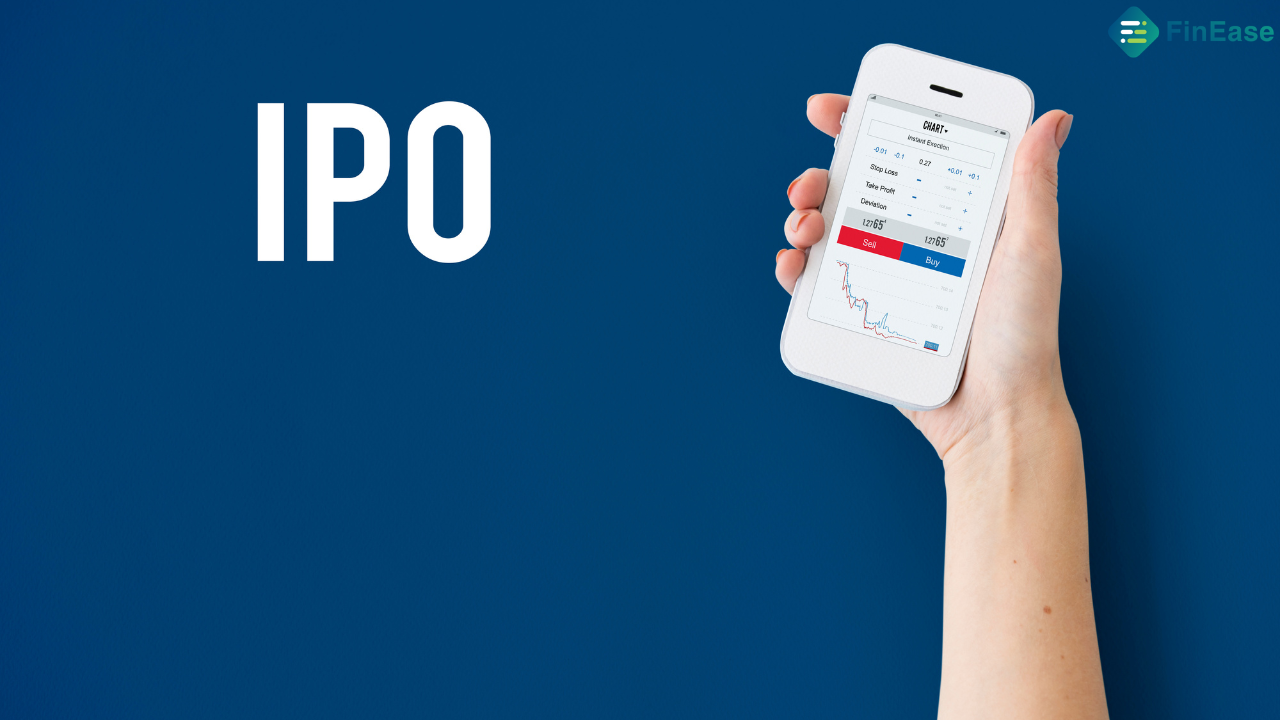Investing in IPOs can be daunting for newcomers as they navigate the complexities of initial public offerings (IPO).
Understanding the company’s potential, market conditions, and timing are crucial for successful IPO investments.
Novice investors often grapple with the inherent risks, seeking guidance to make informed decisions. Despite the allure of early entry into promising ventures, the volatility inherent in IPOs demands scrutiny and strategic planning.
What is an IPO?
It’s a process by which a company sells its shares to the public for the first time. It allows the company to raise capital from a wider pool of investors while also providing an opportunity for early investors and founders to exit their positions.
The Securities and Exchange Board of India (SEBI) regulates this process. SEBI ensures that the company’s financials, business model, and governance practices meet the requirements before approving the IPO.
What are the steps in the IPO process?
The journey to an IPO involves several key steps:
1. Planning: The company works with investment banks, legal advisors, and accounting firms to prepare all the necessary documentation and filings.
2. SEBI Approval: The company submits a Draft Red Herring Prospectus (DRHP) to SEBI, which reviews the company’s details and provides the necessary approvals.
3. Marketing: The company’s management engages investors with multiple promotions in India and globally to generate interest in the upcoming IPO.
4. Pricing: Once SEBI approves the IPO, the company and its underwriters determine the final price per share based on market demand and other factors.
5. Trading: Finally, the company’s shares get listed on the BSE or NSE, and trading begins, marking the company’s transition to a publicly traded entity.
The IPO process provides investors with a transparent and well-regulated platform to participate in the growth stories of promising Indian companies.
Reasons for Investing in IPO:
Investing in an IPO can be an exciting opportunity for investors. Here are some of the key reasons why you might want to consider adding IPOs to your investment portfolio:
Potential for High Returns:
One of the main draws of investing in IPOs is the potential for outsized returns. When a company goes public, its shares frequently debut at prices lower than their actual value to stimulate investor demand.
It leads to a significant “pop” in the share price on the first day of trading, potentially enabling early investors to make substantial gains quickly.
Opportunity to Invest in a Growing Company:
These companies are often in the early stages of their growth cycle, offering the potential to capitalize on their future success and expansion. By investing in an IPO, you can become a shareholder in a business with promising prospects.
Diversification of Investment Portfolio:
Incorporating IPOs into your investment portfolio can help diversify your holdings and reduce overall risk. The performance of IPO investments may not be directly correlated with the broader market, providing a hedge against volatility in other asset classes.
However, it’s important to note that investing in IPOs also carries unique risks, such as a lack of trading history, higher volatility, and the potential for underpricing or overpricing of shares.
Risks of Investing in IPOs:
While IPOs can offer exciting investment opportunities, one needs to be aware of the potential risks involved. As an investor, you should carefully consider these factors before going for an IPO in the Indian stock market.
1-Lack of Trading History:
One of the primary risks of investing in IPOs is the lack of trading history for the company’s shares. Since these are newly public companies, limited financial data, and performance track records are available for investors to analyze. Assessing the company’s accurate value and prospects becomes challenging.
2-Volatility in Share Price:
IPO shares can be highly volatile in the early stages of trading. The share price may experience significant fluctuations, on the upside and downside, based on market sentiment, investor demand, and other factors. This volatility can expose investors to substantial short-term losses if the share price drops soon after the IPO.
3-Underpricing or Overpricing of Shares:
Another risk associated with IPOs is the potential for underpricing or overpricing of the shares. Investment banks and the issuing company may not accurately gauge the appropriate offer price, leading to either underpricing (where the shares rise significantly on the first day of trading) or overpricing (where the shares struggle to gain traction in the market).
It’s essential for investors to carefully research the company, its financials, and industry trends, as well as the pricing dynamics, before investing in an IPO. Diversification and a long-term investment horizon can also help mitigate the risks associated with IPO investments.
Factors to Consider When Investing in IPOs:
Investing in an IPO can be an exciting opportunity, but it’s crucial to conduct thorough research and evaluate several key factors carefully. Here are some important considerations for investing in IPOs in the Indian stock market:
1-Company’s Financials and Growth Prospects:
One of the primary factors to assess is the company’s financial health and growth potential. Analyze the company’s financial statements, including its revenue, profitability, cash flow, and debt levels. Understand the company’s business model, market share, and growth strategies to gauge its long-term viability and ability to generate sustainable returns.
2-Industry Trends and Competition:
Examine the industry in which the company operates, including its growth trends, competitive landscape, and regulatory environment. Assess the company’s competitive positioning within the industry, its unique value proposition, and its ability to maintain a competitive edge.
3-Management Team and Corporate Governance:
The quality and experience of the company’s management team play a crucial role in its success. Evaluate the backgrounds, track records, and decision-making abilities of the executives. Review the company’s corporate governance practices, such as the composition of the board of directors, ownership structure, and shareholder rights.
Strategies for Investing in IPOs:
Investing in IPOs can be a promising opportunity but requires a well-thought-out strategy to navigate the unique risks and challenges. Here are some key strategies to consider when investing in IPOs in the Indian stock market:
Allocating a Portion of Your Portfolio:
When considering IPO investments, allocating only a small portion of your overall investment portfolio is generally advisable. It helps to limit your exposure to the heightened volatility and uncertainty associated with newly listed companies. The specific allocation will depend on your risk tolerance and investment goals, but a general guideline is to keep IPO investments to around 5-10% of your portfolio.
Timing Your Investment:
The timing of your IPO investment can be crucial.
Before deciding to participate, it’s crucial to be selective and thoroughly research the company. Avoid jumping in on the first day of trading, as the initial price surge may not be sustainable. Instead, consider waiting for a few trading sessions to see how the stock behaves and whether it’s settling at a reasonable valuation.
Researching and Due Diligence:
Thorough research and due diligence are essential when investing in IPOs. Take the time to carefully review the company’s financial statements, business model, growth prospects, management team, and industry dynamics. Rely on credible sources, such as the company’s prospectus, news reports, and research reports from reputable brokerages, to gather reliable information.
Adopting a disciplined and well-researched approach can enhance your chances of successful IPO investments.
Conclusion:
The allure of IPOs is undeniable – the potential for outsized returns, the chance to invest in growing companies, and the opportunity for portfolio diversification. However, these newly public entities also come with inherent risks, from a lack of trading history to volatile share prices.
The key is to approach IPO investing with a balanced mindset. Thorough research, careful timing, and prudent portfolio allocation are essential to navigating this landscape successfully. By combining enthusiasm with diligence, you can capture the excitement of IPOs while mitigating the risks.
Remember, IPOs are not a guaranteed path to riches, but for those willing to put in the work, the rewards can be substantial. Embrace the opportunity, but do so with a steady hand and a clear head. With the right strategy, the IPO market can be a valuable addition to your investment portfolio.



